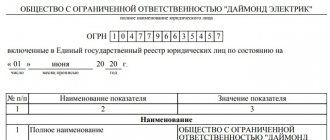Content:
1. Bankruptcy auctions: concept and features 2. Basic conditions for participation in bankruptcy auctions 2.1 Submitting an application 2.2 Setting the price of the object 3. Stages of bankruptcy auctions 3.1 Primary auctions 3.2 Repeated auctions 3.3 Public auctions 4. Types of property put up for bankruptcy auctions 5. Platforms for bankruptcy auctions 6. Main stages of participation in public electronic auctions Stage 1. Registration and receipt of an electronic signature Stage 2. Registration on the electronic trading platform Stage 3. Selection of lots Stage 4. Setting up the software Stage 5. Preparing an application for participation in electronic auction for bankruptcy and transfer of the deposit Stage 6. Submitting an application for participation Stage 7. Participation in the electronic auction Stage 8. Completion of the electronic auction and summing up Stage 9. Full settlement with the seller. Entry into property rights
Bankruptcy auctions: concept and features
There are situations when the debtor (whether a legal entity or an individual) does not have the financial ability to repay the loan or close the issue of other financial obligations (tax payments, loans, etc.). Then the bankruptcy procedure comes to the “help”, which is described in detail in this article.
The debtor's described property is put up for auction to cover financial obligations to creditors. This is called bankruptcy bidding , when the bankrupt’s property is sold through auctions.
Bankruptcy proceedings (also called bankruptcy auctions) are the last stage of the bankruptcy procedure for an individual or legal entity.
The assessment of the property and its further sale is carried out by an arbitration manager, who is appointed by the court. His responsibilities include the full organization of auctions and selection of property for sale.
The Federal Law “On Insolvency (Bankruptcy)” very clearly states that the bidding procedure must be carried out electronically on electronic trading platforms. Auction participants can be both individuals and legal entities.
There is a “belief” that bankruptcy trustees often buy out lots themselves at competitive prices and then resell them. But I can assure you with certainty that this is not so. The bankruptcy procedure itself, and then the bidding process, is absolutely transparent. Its progress can be tracked at any stage, so if you suspect something, you can safely file a complaint with the appropriate authorities. If, as a result of its consideration, facts of fraudulent actions are revealed, the bankruptcy trustee and all persons involved in this matter will face not only administrative, but also criminal liability.
Until 2015, only the property of legal entities could be sold at bankruptcy auctions, but after the Federal Law “On Bankruptcy of Individuals” came into force, it became possible to sell their property as well. This law fully regulates the tendering procedure.
The list of property at auctions for bankruptcy of individuals may include vehicles, land, plots, dachas, residential and non-residential premises, large household appliances, etc.
The sale of the debtor's property at auction makes it possible to partially, and sometimes completely, settle obligations to the creditor.
We discussed the topic of bankruptcy of individuals and legal entities in great detail in previous articles.
There are 2 schemes for selling bankrupt property:
- Bidding (open auctions) . Anyone can take part in them. However, there are cases when participation may be limited due to the fact that the property cannot be in free circulation. This could be jewelry or weapons.
- Competitions. Property that has the status of cultural or historical value, monuments of cultural heritage, etc. During the competition, increased security measures must be applied, but the organizers are also obliged to provide free access to potential buyers to the product.
If the auction is won by the participant who offered the highest price, then in the competition, in accordance with clause 4 of Article 447 of the Civil Code of the Russian Federation, the winner will be the participant who agrees to fulfill all the conditions presented in the sale and purchase agreement and other documents regulating holding a competition.
Answers to frequently asked questions
Questions regarding all aspects of bankruptcy bidding follow.
What property of bankrupts and debtors can be bought at auction
At bankruptcy auctions you can purchase almost any property:
- property complexes of commercial and industrial enterprises - workshops, warehouses, railway access roads, land plots and rights to use them;
- if we are talking about agricultural enterprises, agricultural holdings, land plots or farm buildings, harvested crops, a herd of cows, etc.;
- transport and technological equipment;
- securities, shares, bonds, bills and other financial assets that have the properties of documents of title - bills of lading, warehouse invoices, customs receipts, etc.;
- copyrights, franchises, licenses and other types of property that fall under the definition of intangible;
- office equipment;
- residential and office premises, houses, cottages, country houses and land plots, as well as construction permits and long-term lease rights;
- personal and household belongings of the bankrupt debtor;
- boats, yachts, personal aircraft;
- finished products, semi-finished products, raw materials and other warehouse stocks.
Here I note that the winner of the auction receives all the pros and cons. This includes, for example, debts for unpaid property taxes, questionable legal status of vehicles, and other legal and claim costs.
Auction dates
The duration of bankruptcy auctions is determined only by the decision of the arbitration manager and the trading schedule of the corresponding ETP. The auction is held within one business day, according to the existing operating hours of the trading platform.
How is the winner determined?
The winner of the auction is the bidder who offers the highest price for the property being traded. Also, sometimes, in determining the winner of the auction, accompanying conditions may be specified, for example, the presence of a license to own such property.
How to inspect the property put up for auction
The auction trading platform is obliged to provide full information access to property lots. This is necessary so that any registered auction participant can preview the property put up for auction.
In practice, it looks like this: at a certain time, an inspection of the object is carried out as agreed between the auction administration and bidders.
How does the auction end? Can the winner not buy the lot?
If, following the results of a bankruptcy auction, the property in the won lot is not purchased by the winner, then two scenarios are realized.
- If the winning participant still intends to buy it out using a loan, then a corresponding agreement is signed.
- If the participant does not have the opportunity or intention to redeem the won lot, then the entire amount of the security deposit made by the participant is withheld from the ETP.
What is earnings?
The main earnings at bankruptcy auctions or the benefit from participating in other similar auctions is the infrequent opportunity to purchase expensive property at prices that may be 30% or more below market prices.
Checking real estate for all main types of encumbrances
When selling both commercial and residential real estate through auctions, there is a distribution of responsibility for providing complete and objective information about the legal status of the lots offered for auction.
The inspection of the property is carried out at the stage of bankruptcy proceedings, when an inventory of the property of the bankrupt debtor is made by the judicial authorities.
However, in practice, arbitration courts and the bankruptcy trustee are only involved in checking existing documents for real estate, what encumbrances exist on it only at the time of bankruptcy.
A more complete check of the legal status of the real estate put up for auction is required to be carried out by trading auction platforms and experts attracted by them for this purpose.
Checking vehicles for theft, number of owners, participation in road accidents, etc.
The issues of inspection, technical condition of vehicles and other equipment put up for bankruptcy auctions are dealt with by experts attracted by ETP.
However, at the stage of preparation for bidding, any auction participant can obtain all the necessary information on vehicles independently. To do this, the ETP administration must ensure equal access to all documents for equipment.
Where to find money to participate in bankruptcy auctions.
In order to participate in bankruptcy auctions, it is necessary to deposit the appropriate deposit or security deposit into the ETP account before they begin. In addition, if the auction is successful, the new owner of the property is obliged to buy it in full within the agreed period.
However, when drawing up an agreement for the purchase and payment of property won at an auction, a condition is sometimes included that the transaction can be closed through a loan.
Where to start learning to trade.
Now the resources have ready-made training videos and seminars covering all the intricacies of the technique of working through auctions.
In addition, you can start getting acquainted with auctions by studying all the information available on the ETP: methodological guidelines and instructions on how auctions are conducted, what is needed for this, the regulatory framework. At the same time, you can study the format of services of a specific trading platform, prepare for registration on it, and select the necessary documents.
Basic conditions for participation in bankruptcy auctions
In order to take part in bankruptcy auctions, you must fulfill several mandatory conditions.
2.1 Submitting an application
Naturally, the first condition is to submit an application to participate in the auction. The application must be completed on a standard form in two copies.
After the application is completed, a deposit agreement is concluded between the participant and the organizer of the bankruptcy auction, which regulates the amount that must be transferred by the participant to the bank account of the auction organizer. The deposit is a guarantee that after winning the bidder will buy the lot.
After transferring funds, the participant must submit the original payment order with a note from the bank confirming the transfer. The payment order must be submitted no later than the last day for accepting documents.
2.2 Setting the price of an object
The initial price of the bankruptcy auction object is set either by a special committee or a meeting of creditors in accordance with the exchange price of assets. The procedure for setting a price is such that, first of all, a report is prepared to evaluate the object of the bankruptcy auction. Such an assessment is carried out either by the arbitration manager or by a trustee appointed by him. The initial price must not be lower than the market average. The price is usually set in the last hour of the business day preceding the trading day.
Thus, according to Article 94 of the bankruptcy law, the minimum value of the property is assigned by the debtor’s arbitration manager. The final cost is determined based on the results of the auction.
Procedure for conducting a public offering
- Modern auctions with public offerings are conducted via the Internet. This is convenient and saves a lot of time.
- The agency involved in bidding must inform about the auction through the media. The publication is carried out in the form of a notice, which indicates the most important information about the upcoming auction: the form of the auction, a description of the property to be sold, information about the organizer, the bankrupt, the bankruptcy trustee, the starting price, the amount of the deposit, the main stages of the auction, the period of the auction.
- The highest (starting) price for a lot should be lower than at previous auctions. The reduction is set at 10-20%.
- The deposit is transferred to the auction organizer within a predetermined period. The amount of the deposit may be affected by the starting price, as well as the value of the product.
- Applications for participation in the auction are accepted within a certain period. It usually lasts up to two weeks.
- The issue of the number of stages and their time interval is being resolved. For example, three periods of four days.
- The most important setting parameter is the so-called price reduction step. For example, after each subsequent period the price is reduced by 10%.
- Each period can be used by a bidder once to set its price.
- The auction winner is determined as follows. Within a specific stage, the one who offers the highest price wins (according to the latest amendments to the law).
- At the discretion of the organizers, the auction may end at the first stage, subject to the presence of at least one application. Sometimes auctions are held in full and the winner is announced at the end.
Stages of bankruptcy bidding
The bankruptcy bidding procedure has strict regulations, and therefore it has 3 stages: primary, repeated and public. Let's take a closer look at each.
3.1 Primary trading
Primary bidding is the initial stage of the procedure. Participants can place bids, increasing the price of the lot, only by the increment size determined by the terms of the auction. The next step can be taken only half an hour after the system accepts the previous one.
3.2 Re-bidding
If for some reason the primary auction is declared invalid, a repeat auction is scheduled. The cost of the lot in this case will be 10% lower than the original one.
3.3 Public bidding
If the first two stages of bankruptcy bidding are declared invalid, a public auction is scheduled. The main feature of public auctions is that the price of a lot is reduced at certain intervals. At public auctions you can purchase a lot at a discount from the initial price to 99%. It is important to have time to conclude a deal before your competitors.
We will talk about what can be purchased at bankruptcy auctions in the next paragraph of the article.
Types of property put up for bankruptcy auction
The list of property put up for bankruptcy auction is huge. Let's take a closer look at the most popular objects that are put up for auction:
- securities of legal entities or individuals;
- factories;
- the organizations themselves (firms, enterprises, including manufacturing factories, etc.);
- special equipment;
- transport;
- Appliances;
- trademarks and rights of claim;
- real estate (commercial, residential, industrial, buildings, structures, land, including agricultural land, etc.);
- money;
- production equipment.
Due to the fact that there are few people in our country who have information that it is possible to participate in bankruptcy auctions, you have every chance of conducting an effective transaction.
In some trades, there is a minimum number of participants, and, therefore, it is possible to buy an asset at a minimum price.
Types of objects
The auction market assumes the possibility of selling the following types of objects:
- Movable property. This category includes:
- vehicles,
- working machinery and equipment,
- Construction Materials,
- garage buildings and the like.
- Property of an immovable nature. These include:
- land,
construction projects (enterprise building, offices, shops, including residential real estate, if it was included in the bankruptcy estate, etc.)
- Accounts receivable. It should be noted right away that this is a rather complex topic. The process of collecting receivables involves many nuances and features. And many simply do not understand what it is. In fact, receivables are the same asset that can be disposed of in the same way as property. But the most interesting thing is that the main buyers of debt are collectors and specially organized companies that, on contractual terms, buy or collect debt for a certain interest rate.
Bankruptcy trading platforms
There are a very large number of platforms for holding auctions, including those that successfully sell the property of bankrupt people, but we can highlight the 5 most popular ones.
1 Platform - Unified Federal Register of Bankruptcy Information (bankrot.fedresurs.ru)
It is on this site that complete information about ongoing auctions is collected, and this information is also posted in advance. Studying the presented register of objects will allow the participant to more fully evaluate the auction and prepare for it as thoroughly as possible.
2 Site - Sberbank AST (sberbank-ast.ru)
This site is one of the most convenient and has an intuitive interface. It displays the property of companies that have taken out a loan and cannot repay it. The disadvantage of this resource is that it contains a small number of auctions.
3 Site - Fabrikant.ru (fabrikant.ru)
The most extensive site with a large number of exhibited lots.
4 Site - Implementation Center (bankrupt.centerr.ru)
This site displays the property of organizations that are legally declared bankrupt.
5 Platform – Universal ETP “Electro torgi” (electro-torgi.ru)
The “youngest” site that is actively developing. It has a clear and user-friendly interface, and lots are updated frequently.
There are a huge number of sites on the Internet where you can find the desired auction items.
Auction sites are divided into 3 types:
- Trading platforms - direct organization and conduct of online auctions;
- Official portals - the most complete data on trading, published in accordance with Russian legislation. The most striking examples of such sites are Fedresurs and the Saturday edition of the Kommersant newspaper.
- Aggregators of bankruptcy auctions - such portals accumulate all information about upcoming auctions from the Internet and host them.
Of course, before you take and participate in the auction, you need to seriously prepare and decide on the site. We will talk about the main stages of participation in the next paragraph of the article.
Examples of purchase and resale of bankrupt property
To make sure that you can really make money at bankruptcy auctions (which many professional auctioneers successfully do), I will give a couple of illustrative examples.
Example one. One of the Vladivostok businessmen had a good boat, with a cabin, and an outboard engine. But something didn’t work out for him in business; he was declared bankrupt. The boat, which was priced at 3 million rubles, went under the hammer for only 700 thousand rubles (4 times lower than its real value).
The auctioneer, who received such a wonderful asset into his hands, put it up for auction the very next day, but at a different auction site. There this boat was sold for 1.5 million. The price, of course, is 2 times less than the real one, but the auctioneer’s earnings amounted to 800 thousand rubles in virtually one day.
Example two. In the suburbs there was an old, semi-abandoned warehouse, the cost of which, together with the land plot, was only 200 thousand rubles. The owner of the farm went bankrupt and the property was sold. The new owner who bought the house put up only the land plot for auction a month later. It was sold for 1.5 million rubles. The auctioneer's profit amounted to more than 1 million rubles in one month.
As a rule, professional auctioneers work not with one lot, but with several. This model of investing in bankrupt property allows you to work in this market with minimal risks. A loss on one trade is always offset by profits on others.
Main stages of participation in public electronic trading
At its core, the procedure for taking part in bankruptcy auctions is simple; it is important to comply with the law and go through all the stages. Below I propose to consider all stages of participation in the auction.
Stage 1. Registration and receipt of an electronic signature
An electronic signature is a specialized set of characters that identifies a signer located on a device similar to an external storage device (flash card).
Thanks to this device, you can conduct electronic document management without using paper media. Detailed information about why an electronic signature is needed, how to obtain it and what types of electronic signatures there are are written in this article.
The main functions of an electronic signature are the protection of documents from forgery, proof of copyright in a particular document, transfer of files via encrypted channels, the ability to submit price proposals when participating in trades and tenders, as well as the signing of contracts and other acts based on the results of trades and auctions.
An electronic signature can only provide access to a certain list of sites, so before ordering it, make sure that the functions and range of services are available.
Stage 2. Registration on the electronic trading platform
In order to register on the electronic trading platform, you will definitely need an electronic signature, as well as uploading a certain list of documents in scanned form.
As a rule, for individuals this is a passport (page spread with a photo and registration), for legal entities and individual entrepreneurs - constituent documents.
Be sure to read the list of required documents in order to have time to prepare them. Site accreditation may take three to five business days. It is not necessary to be accredited at all sites. It is enough to register only at the one where the auction for the selected lot will take place.
Stage 3. Selection of lots
We have already talked above about where to look for bankruptcy auction items. First of all, I advise you to consider offers in your region.
After you decide on the object of purchase, carefully study all the documentation on it (documents on valuation, ownership, etc.) so that in the future no unforeseen situations arise with the original owner of the property.
If you are planning to purchase a car or real estate, you have the right to inspect the property in advance. The auction organizer's card always contains contact information where you can contact and arrange a meeting. We advise you to take an experienced appraiser with you so that the value of the lot does not turn out to be too high. Of course, this only applies to tangible assets (equipment, transport, real estate, and so on).
If you are planning to purchase securities or a company, I advise you to seek advice from experienced economists and lawyers, so that, again, you do not purchase assets at an inflated price.
Thus, a preliminary analysis of the lot will help you adequately assess the feasibility of participating in the auction.
Stage 4. Software setup
To take part in the auction, you need to correctly configure all the necessary programs. To work on an electronic platform, in most cases, the Internet explorer browser is used, and to use an electronic signature, you may need a specialized program “CryptoPro”.
At the moment when you issue an electronic signature, I advise you to consult with the company’s specialists about what computer settings you may need. You can also resort to the services of system administrators.
Stage 5. Preparation of an application for participation in electronic bankruptcy auctions and transfer of the deposit
So, the object of purchase has been selected, the computer is configured, it’s time to register an application for participation. It is important to carry out this procedure in advance so that there is an opportunity (in case of missing documents or errors in registration) to correct everything. This caution is very important for those who are taking part for the first time and have no experience in participating in this type of auction.
A situation may arise that requires the involvement of a third-party specialist, so (I will not tire of repeating) take care of everything in advance, at least 3-4 days before the start of the auction.
At the time of completing the application, you will need to attach a payment order confirming the payment of the deposit amount.
Attention! Without a deposit, participation in the auction is IMPOSSIBLE! The amount of the deposit is determined and indicated in the documentation for the auction and will be approximately 5% of the cost of the object.
Details for transferring funds will also be indicated in the documentation. It is very important to check with the organizers whether it is possible to use the online fund transfer service, since there are often situations where the auction regulates the attachment of a payment order with a bank mark and an electronic receipt may not be suitable.
Another important point is the bank’s commission for transferring funds. Check with your bank about the amount of the transfer fee.
If you lose the auction, the deposit will be returned to you within the time specified in the bidding documents. As a rule, this period can be 30 calendar days.
Stage 6. Submitting an application for participation
For each bankruptcy auction, the application submission time is determined separately. In some auctions, the winner is the one who first submitted an application; in others, it is important to submit an application before a certain point. To get started, attach all the necessary documents, then sign and send them using an electronic signature.
Stage 7. Participation in the electronic auction
There can be a lot of features of participation in an electronic auction, and there are several types of this procedure.
In a closed auction, all submitted bids are opened at a set time, and the winner is the one who offered the best price.
An open auction is a bidding similar to a physical auction, only everything takes place on an electronic platform in your personal account. The organizers set a certain increment of the amount and the period of time during which this step can be taken. Auction participants only see the bidder's number and the amount he bid.
Thus, in an open auction, the winner is the one who submitted the last offer before the end of the auction.
Open bidding is considered the most open and transparent.
Stage 8. Completion of the electronic auction and summing up the results
Upon completion of the bankruptcy auction, within half an hour, the organizers create a protocol that describes the full procedure for completing it, and then within three working days the final protocol is published, where the winner is announced.
For those participants who did not win the auction, it ends quite simply - you need to wait for the deposit to be returned and that’s it. If a refund has not occurred within several days, you should contact the organizers for clarification.
With the winner, everything is much more complicated. After the official publication of the final protocol, a purchase and sale agreement is concluded. The form of this agreement is sent through the electronic trading platform. The winner fills it out, signs it electronically and returns it back to the organizer through his personal account, and then in physical form on paper via mail.
If the winner for any reason refuses the deal, the deposit will not be returned to him.
Stage 9. Full payment with the seller. Entry into property rights
After all formal stages are completed, contracts are signed, the winner sends the remaining payment for the object. It is important to carefully enter the details, as they may differ from those to which the deposit was transferred.
When all conditions are met, the auction winner becomes the full owner of the object and can begin preparing documents confirming ownership.
Thus, if all conditions and stages of bankruptcy bidding are met, no serious problems should arise. In any case, you can always contact the electronic trading platform support service or lawyers for help.
And at the end of the article, I suggest you watch a short video that describes a step-by-step algorithm for preparing for participation in bankruptcy auctions: This concludes my article about bankruptcy auctions. If you still have questions, ask them below in the comments to this article.
PS: Please rate and like, and share this article with your friends and colleagues on social networks.





